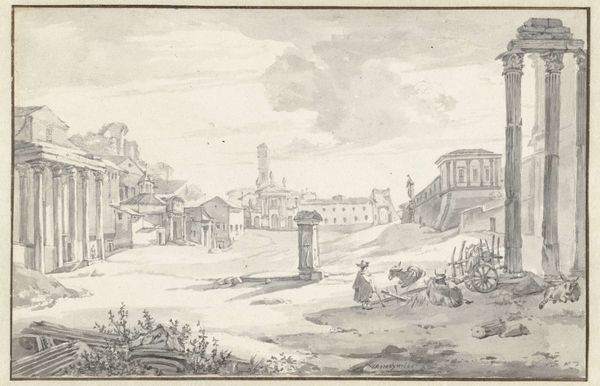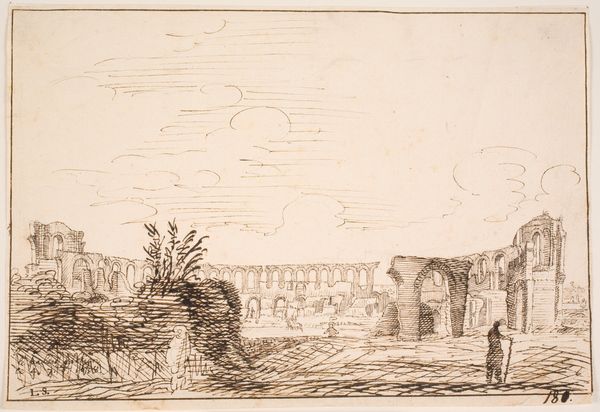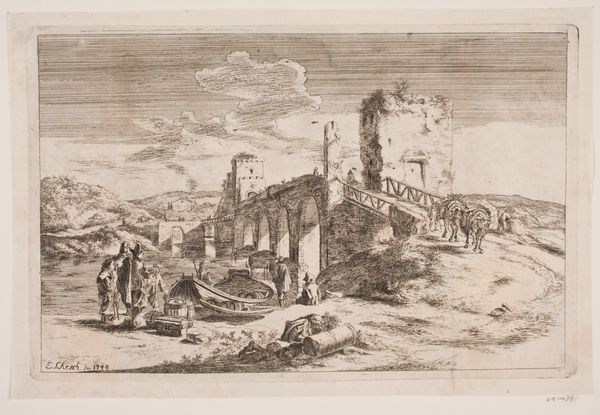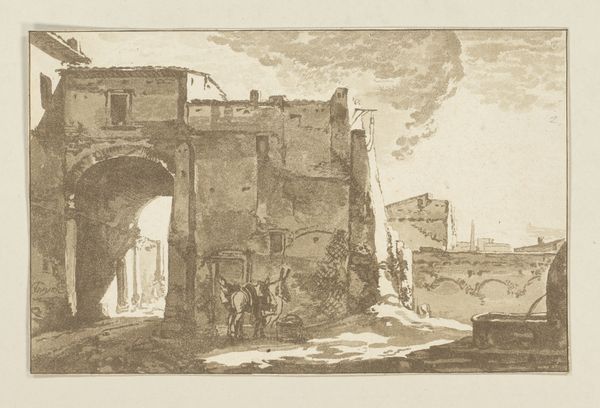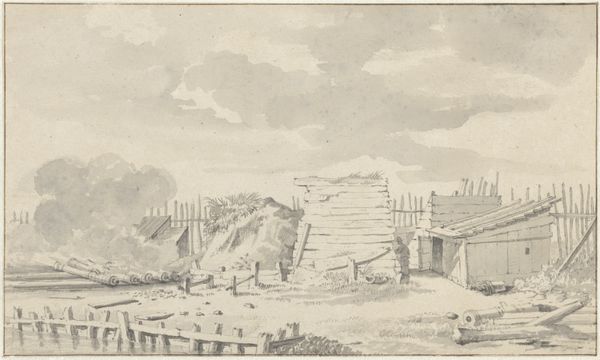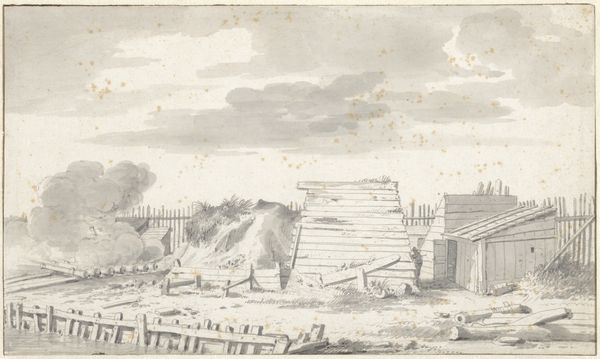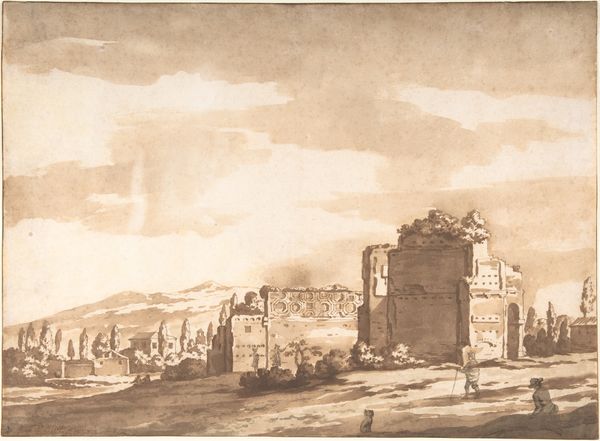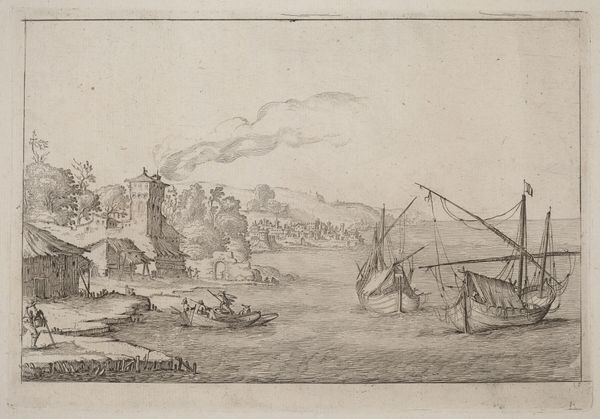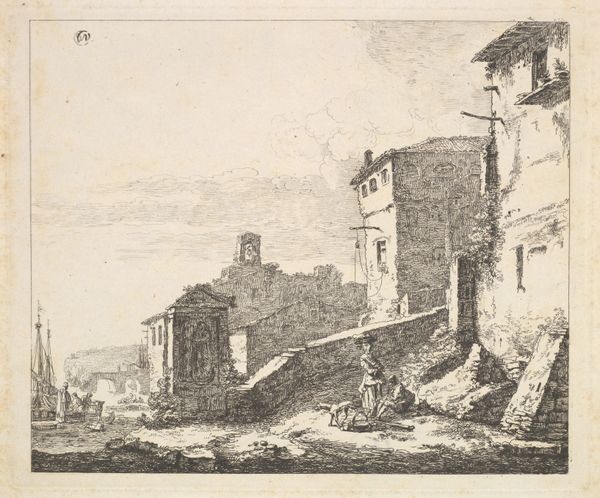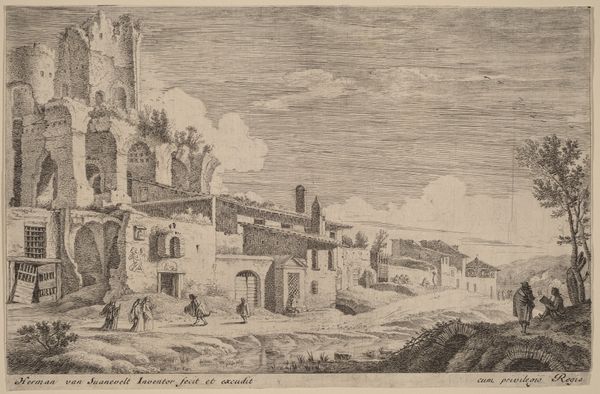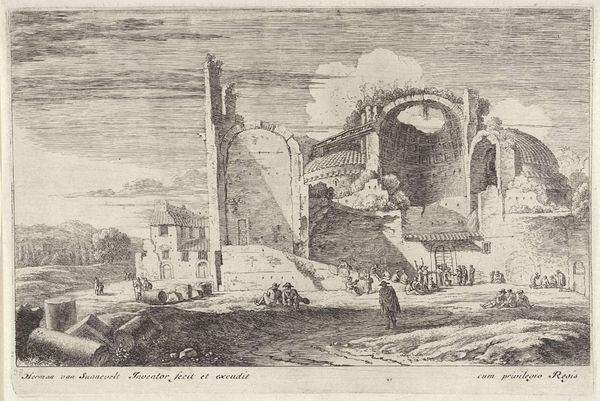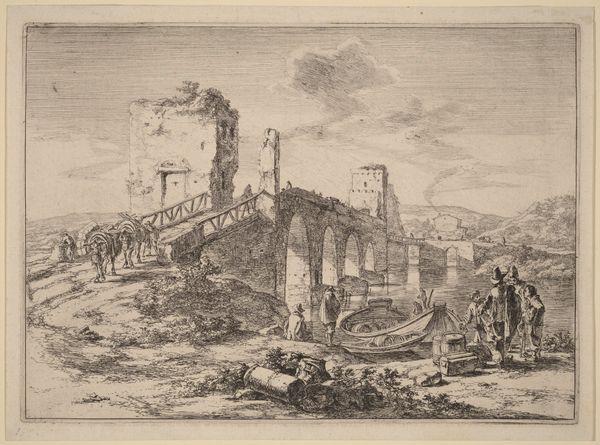
drawing
#
pen and ink
#
architectural sketch
#
landscape illustration sketch
#
drawing
#
toned paper
#
pen sketch
#
etching
#
ink drawing experimentation
#
pen-ink sketch
#
pen work
#
watercolor
Dimensions: 229 mm (height) x 339 mm (width) (bladmaal)
Curator: This detailed drawing, rendered in pen and ink, depicts Le palais Galien in Bordeaux. It comes to us from 1638. What are your initial impressions? Editor: The overwhelming feeling is one of transience, a moment caught between past glory and inevitable decay. The detailed lines used for the ruined palace contrast sharply with the ephemeral quality of the clouds above, really emphasizing that sense of vanishing. Curator: I’m drawn to the power this ruin holds. Consider its placement—not isolated, but still looming large over what appears to be a contemporary village. We can see a tension there, between inherited legacies and present-day living, or the ongoing conversation of history, constantly revised and re-negotiated in the context of each new generation. Editor: Absolutely, that interplay is key. Even the technique amplifies this. Pen and ink lends itself so well to architectural detail, but the subtle toning of the paper lends a sort of sepia wash of nostalgia to the entire piece. What meanings can be gleaned from these ruins themselves, the symbol of empire fallen, the passage of time, the limits of human ambition? Curator: Yes, exactly. And how fascinating to view it through a contemporary lens! We are not simply observing a picturesque ruin. The image raises important questions of memory, power and, critically, of who gets to write the narrative of history. How is the site remembered, memorialized, or perhaps erased? These visual languages reveal layers of colonialism, power struggles and the inevitable social inequalities, continuing narratives relevant to this day. Editor: So true. We can interpret these remnants not only as echoes of power lost, but also perhaps a statement on resilience – the persistence of a place adapting, surviving. Curator: A valuable perspective to be sure. Editor: Well, that’s given me a great deal to consider. It speaks to art's potent ability to conjure meaning through its visual symbolism and how the understanding of any work is affected by these continuous cycles of interpreting imagery, place and time. Curator: For me, it speaks to how historical contexts can shape our engagement with a work of art, prompting us to engage with the complicated social narratives and questions of power woven into its making and enduring impact.
Comments
No comments
Be the first to comment and join the conversation on the ultimate creative platform.
